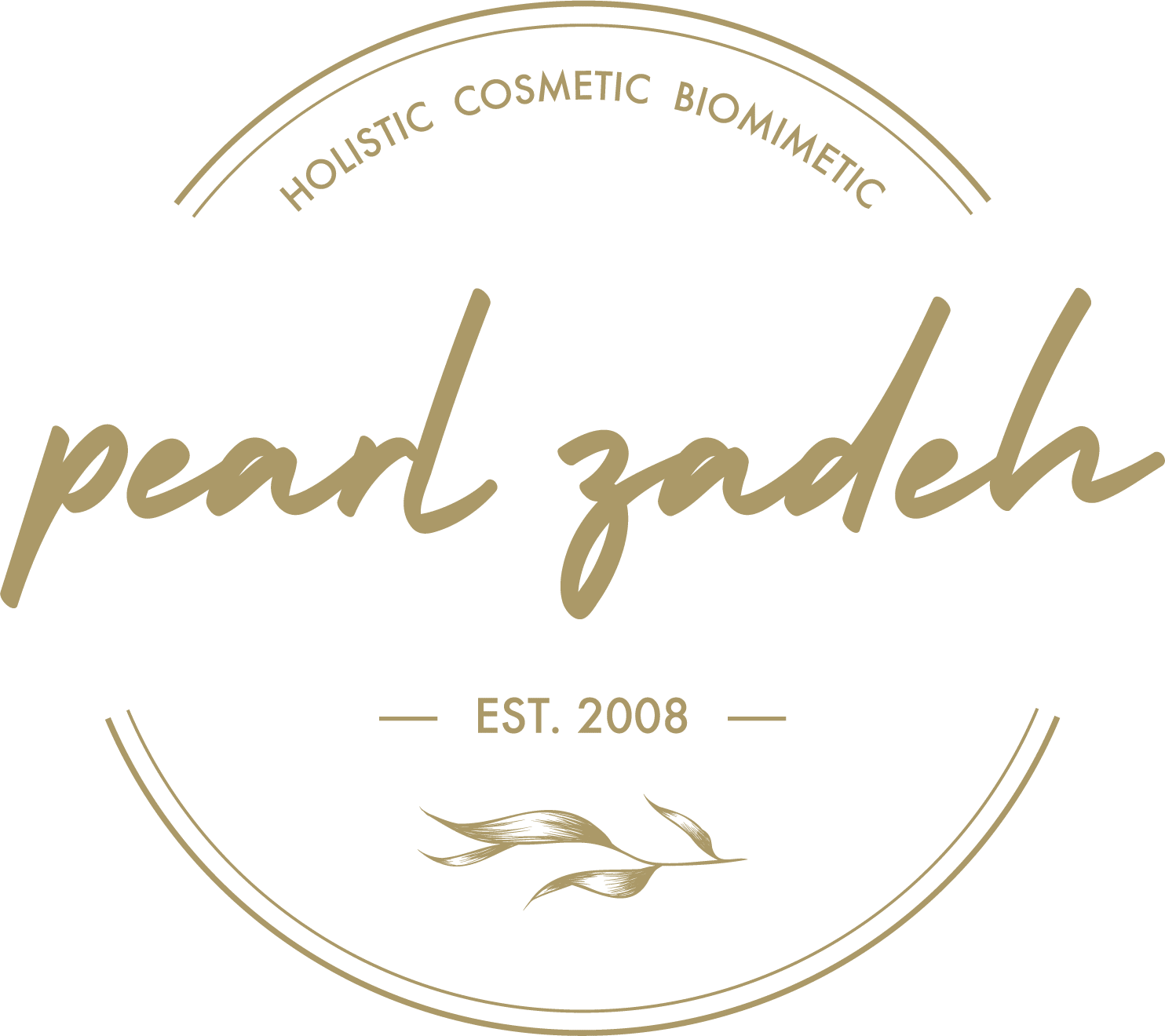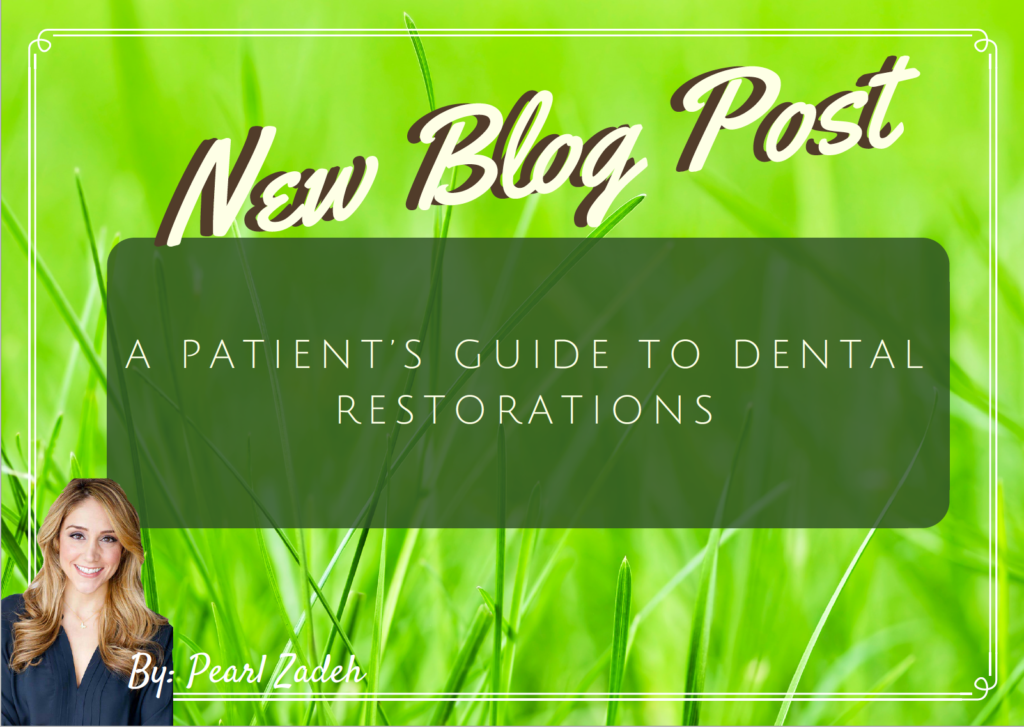A Patient’s Guide to Tooth Restorations (aka types of fillings)
Most people will develop at least one cavity in their lifetime, which means that they’ll need at least one dental restoration. While fillings are one of the most common dental procedures, they’re not necessarily well-understood by everybody. If you are about to visit your dentist to have a cavity filled, you probably have some questions about how the procedure works. Here’s what every patient needs to know about dental restorations.
What are the types of fillings that are available?
When you visit the office of Dr. Pearl Zadeh, there will be several types of fillings available for treating your cavities:
- Composite fillings. This is a tooth-colored filling that can be directly applied to the tooth chair side, to repair a cavity anywhere on your tooth. A ‘filling’ is reserved for areas of smaller decay, were there is an ample amount of tooth structure remaining to support the filling. During the procedure, Dr. Pearl Zadeh will carefully clean the affected area, and then use ‘cavity detecting dye’, to make sure all decay is thoroughly removed. We next will apply a desensitizing agent to minimize any post operative pain. We use a selective etch technique, that limits the application of acidic portion of the bonding steps, called etch, to the enamel portion of the tooth. After that all proper bonding techniques are utilized, while maintaining ideal isolation, to ensure the highest bond strength possible.
Dr. Pearl Zadeh goes one step beyond the average dentist, were she researches and understand the importance of the material that the dental filling is made of. We take pride in the selection of dental material that we utilize for our patients. We avoid materials that contain BPA, BisGMA, or aluminums. The holistic nature of dentistry is honored at the office of Dr. Pearl Zadeh, were we understand the biologic nature of teeth, and try to mimic the original state of the tooth!
- Inlays. An inlay is utilized when more tooth structure is missing and the tooth can not be supported in function by a direct dental filling. Another word for inlay is a lab made filling or partial crown. An inlay can be made of different materials like gold, stainless steal, composite, or porcelain.
- Onlays. An onlay is very similar to an inlay, but it covers more of the surface of the tooth. Other words used to describe an indirect onlay restoration fabricated by a dental lab, is a three quarter crown or partial crown.
How can I tell if I need a filling?
Many times you simply can’t tell if you have a cavity…bummer!! To really understand why this is so, you must appreciate the anatomy of a tooth. The outer layer of a tooth is comprised of enamel. Enamel has no nerve endings, which means you feel nothing, nada, zilch. This also means you have no clue that decay is beginning to form in your tooth. As the decay passes the enamel layer, and ventures on to the layer underneath, called the dentin, you may begin to feel a little something. It can begin as a sporadic ‘awareness’ that something maybe going on. Some people will feel sensitivity to cold, that goes away instantly. Others will feel non lingering pain to eating sweets. In many cases, however, a majority of my patients will not notice any symptoms of tooth decay. This is why routine dental visits are so valued at the offices of Dr. Pearl Zadeh.
With the use of technology that utilizes fluorescence to detect and stage decay, or the use of digital radiography, we employ all tools and techniques available to us that modern dentistry has to offer. The best course to take, is to visit your dentist every six months for a routine dental checkup so that any signs of tooth decay can be identified immediately.
When should a cavity be treated?
At the office of Dr. Pearl Zadeh, we feel that if the cavity is not reversible, then the decay should be treated as soon as possible. There is no tangible way to know the exact speed at which the decay will progress. In trying to employ minimal invasive dentistry, it is always advised that the decay is addressed at its onset. However, if we see that there is an opportunity for the remineralization of the cavity, Dr. Pearl Zadeh will provide thorough instructions on how to create an optimal setting for tooth remineralization to occur.
Does it hurt to have a cavity filled?
Simply put, no! There is zero pain associated with treating a cavity at the office of Dr. Pearl Zadeh. Most of the concern revolving around the potential for experiencing dental pain, stems from past negative experiences at the dental office. At your new patient exam, Dr. Pearl Zadeh will explore any past dental experiences that may have left a negative emotion around dentistry, and explore options that will work best for each individual patient to feel comfortable and calm for your dental visits. Dr. Pearl Zadeh is an expert at working with a wide variety of patients concerns revolving around dental phobias. Whatever the cause maybe, we are open to exploring various tools like nitrous oxide, oral sedative, IV sedation and general anesthesia.
It’s the little things that make a big difference!! For example, Dr. Pearl Zadeh uses a special topical analgesic that is specially compounded for our office, not the generic topical jelly most dentist use. In addition, she warms the dental anesthetic, so no painful sensation of fluid is felt during injection. We offer a warm blanket over your body and blue tooth head phones to listen while receiving your dental treatment.
If you’re in need of a dentist in the Woodland Hills area whose services you can always depend on, it’s time to book an appointment with Dr. Pearl Zadeh. Dr. Pearl Zadeh is an experienced Holistic dentist whose places an emphasis on the biologic nature of teeth, and has a heightened focus on dental materials that she uses for her patients. Dr. Pearl Zadeh offers dental cleanings, dental restorations, biomimetic dentistry, holistic dentistry, teeth whitening, cosmetic dentistry, full mouth restorations, customized smile design and other services to help you enjoy better oral health and a bright, gleaming smile. We are currently accepting new patients with PPO insurance. Call (818) 672-1071 to schedule your first visit.

